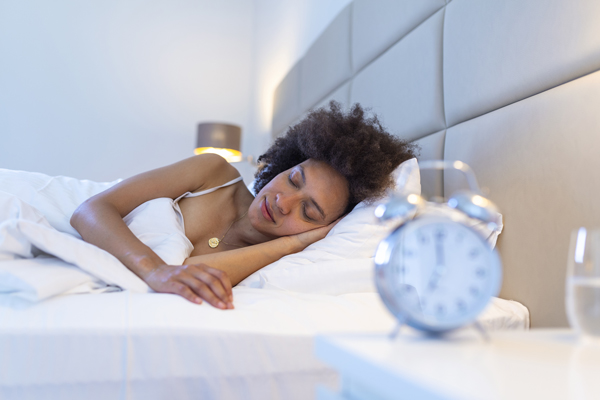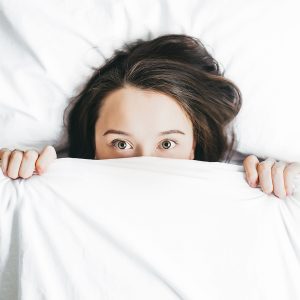Beddy Bye Nutrition
Sleep is vital for a healthy lifestyle. The amount of sleep you need depends on many factors. Not everyone needs 8 hours of sleep according to a new University of California-San Diego study. In fact, the study proved that there is no statically significant benefit to sleep more than 6.5 hours. The data of 1.1 million people showed that those who
slept 8 or more hours had shorter lifespans than those with 6.5 hours or less. But what if you don’t sleep well? Here are some nutrients that can help you sleep well if you are deficient in them. Magnesium & potassium- in dark leafy
greens & avocados, L-theanine is found in green teas, and vitamin D is made from sun exposure. During the winter, you might want to supplement D with vitamins. 
Eat to Sleep
Did you know that some foods help you sleep and others can keep you up? Of course we all know about caffeine, but garlic, onions, alcohol, chocolate, and high fat foods can keep you from reaching a deep sleep and make you restless. There are a few items that can help bring on the zzz’s. Cherries are one of the only natural sources of melatonin, a hormone your body naturally produces. So when they are in season, have a few before bed. You may have heard of tryptophan and turkey. While it is found in the meat, there are other sources as well. Pumpkin seeds are an excellent source and great for you as well.
Adjusting to Sleep
In 2005, The Journal of Manipulative and Physical Therapy (Mar-Apr;28(3):179-86) asked the question, “Insomnia: does chiropractic help?” 1/3 of 154 patients who completed the interview reported their sleep pattern was changed immediately after their chiropractic adjustment. All but 1 reported improvement. While this study is ten years old, many chiropractic patients have experienced similar results. Have you? The lifestyle changes that are natural byproducts of getting adjusted are remarkable. With the wide use of wearable fitness trackers that can monitor the amount of deep sleep (REM) people get at night, a chiropractor just presented interesting findings at a conference in Las Vegas. She compiled 100 of her patients sleep patterns for a three-month period using various fitness trackers the patients owned. Her well-adjusted population of patients gets an average of 30% more time in REM sleep than the general population. According to the National Institute of Health, adults spend about 20% of their sleep in REM and children 50%. People who get more REM sleep feel more rested and exhibit more “peaceful” EEG (brain wave) readings.




